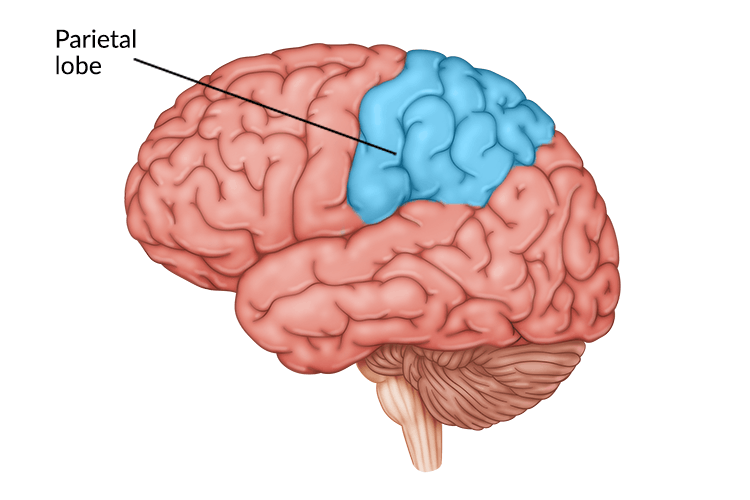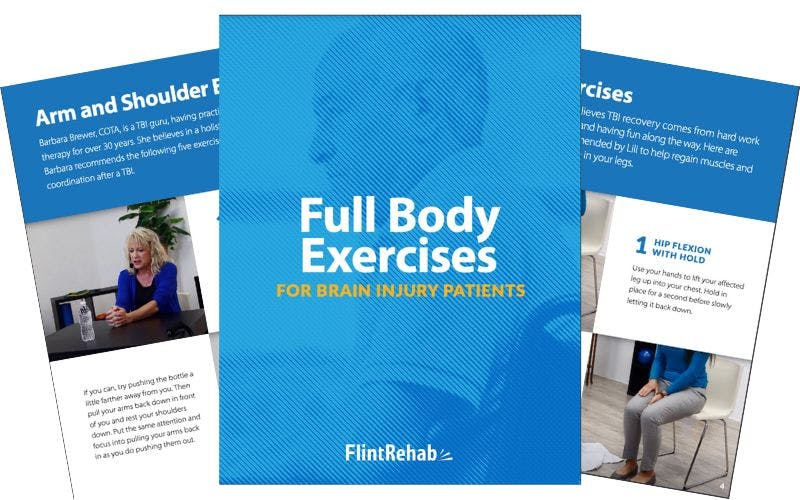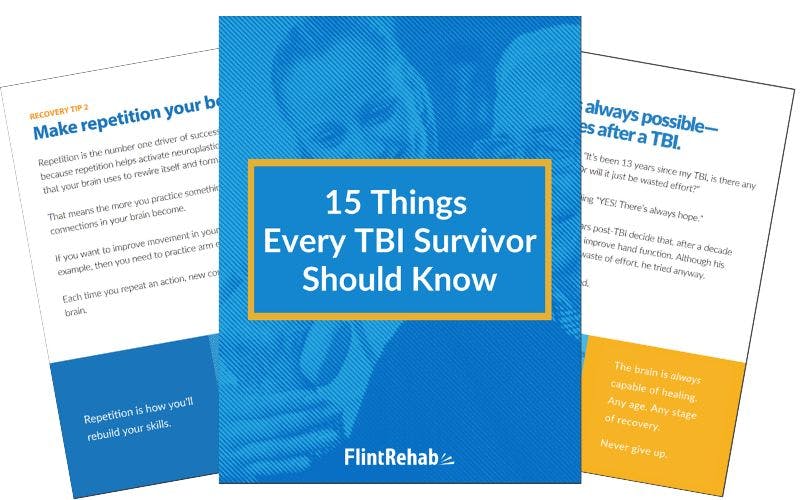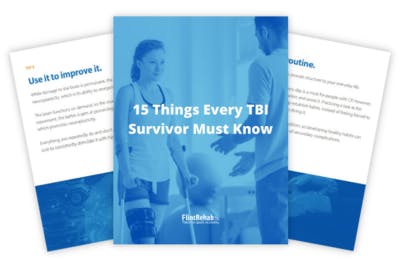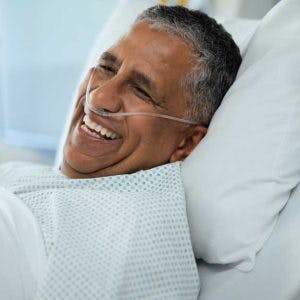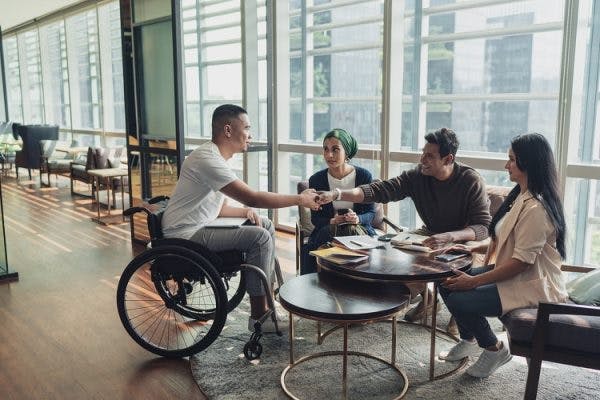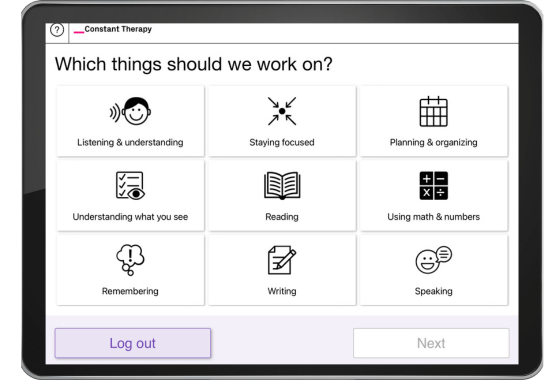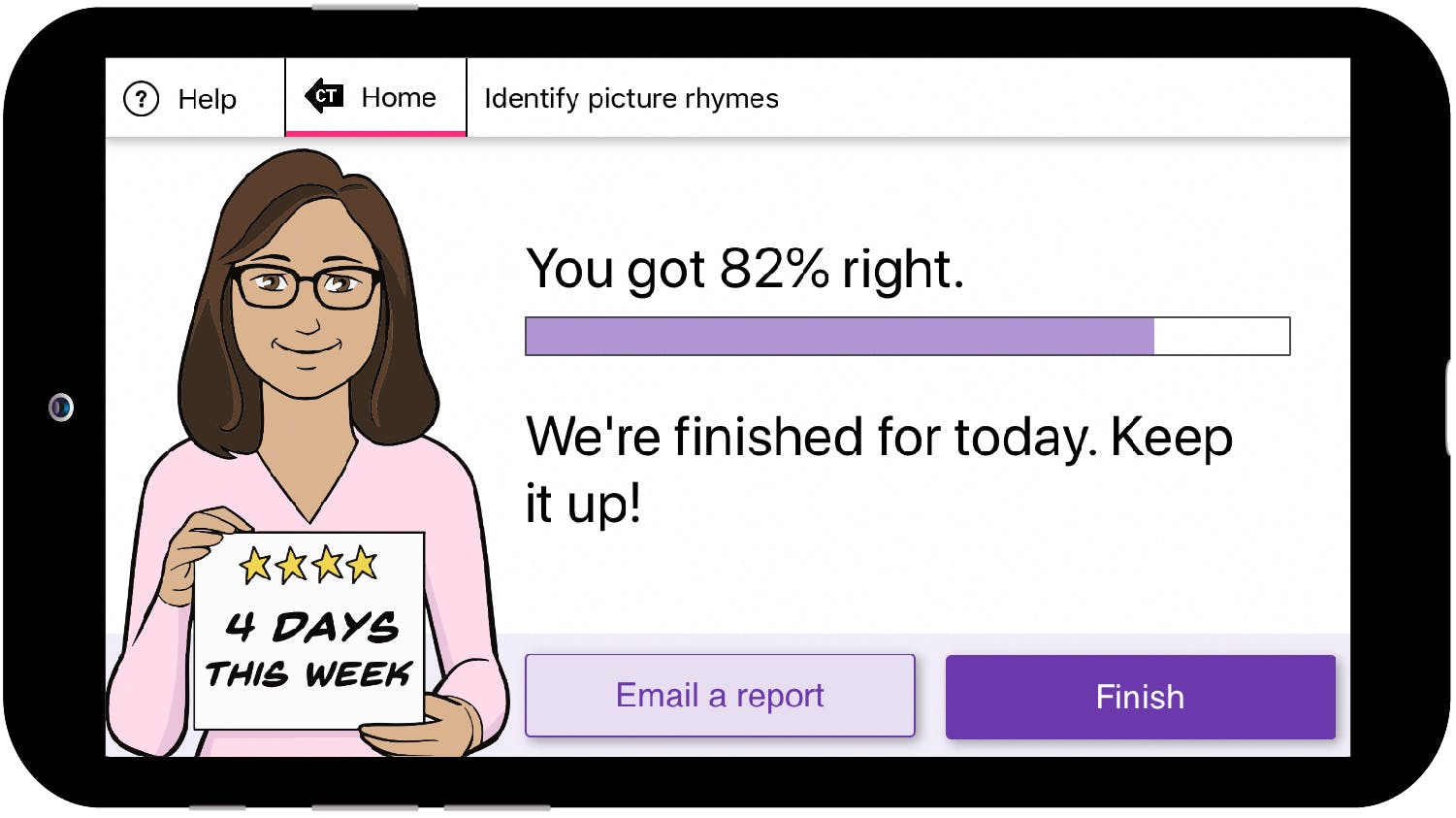A parietal lobe stroke can affect the brain’s ability to interpret sensory information and spatial awareness. As a result, survivors of a stroke in the parietal lobe often struggle with piecing together their experiences, among other things.
Thankfully, there is hope for improvement through a comprehensive rehabilitation program. In this article we will discuss the major symptoms of parietal lobe damage as well as the treatment process.
Understanding Parietal Lobe Damage
The parietal lobe rests near the top, middle section of the cerebral cortex, just behind the frontal lobe and above the temporal lobes. Because the brain is divided into two hemispheres, this structure can also be divided into the left and right parietal lobes. As a whole, the parietal lobe is made up of several key areas but can be separated into two distinct regions with different but related functions.
Near the front of the parietal lobe lies one of these main regions, called the somatosensory cortex. This cortex’s main function is processing sensory input from the rest of the body as well as the environment. For example, the somatosensory cortex is responsible for recognizing that something touching your hand is hot or cold.
Other sensations processed by the somatosensory cortex include:
- Pain
- Touch
- Proprioception (awareness of the body’s position)
- Vibration
The other main area of the parietal lobe is in charge of constructing a spatial system in the mind to represent the world around us. This is what allows a person to maintain a sense of direction even with their eyes closed. This also directly affects balance and limb awareness as the parietal lobe processes sensory input from the body.
Additionally, the parietal lobe plays a part in memory, cognition, speech, and reasoning. Since this structure is involved in many different processes, parietal lobe damage can have a serious impact on a person’s life and ability to interpret the outside world.
Symptoms of Parietal Lobe Damage
Due to its involvement in a wide range of processing functions, parietal lobe damage can cause a variety of sensory and perception problems. Although symptoms vary widely between survivors based on the severity and exact location of the injury, there are several common secondary effects resulting from damage to this area of the brain.
Common symptoms and secondary effects following injury to the parietal lobe include:
1. Sensory Deficits
As we discussed above, the somatosensory cortex is located in the parietal lobe and is responsible for many sensory functions. Therefore, sensory deficits are a common symptom of parietal lobe damage and can create difficulty performing daily activities or functions, sometimes affecting quality of life.
These sensory deficits can include:
- Numbness or diminished sensation
- Tingling or burning
- Difficulty recognizing hot and cold
Damage to the parietal lobe can also cause problems with localization. In other words, the survivor may feel touch or pain sensations but be unable to locate where on the body that sensation is coming from.
2. Vision Problems
While vision and perception are usually considered functions of the occipital lobe, the parietal lobe also plays an important role in visual processing and performance. This is because the parietal lobe and occipital lobe communicate to help process and integrate sensory information.
For example, parietal lobe damage makes it more difficult to process certain visual information such as length and depth, leading to poor hand-eye coordination and balance. This contributes to decreased spatial awareness and impaired navigational skills. Difficulty with visual tracking (following an object with the eyes) is also a common vision deficit resulting from parietal lobe damage.
3. Left Side Neglect
Another common symptom of parietal lobe damage is hemispatial neglect. This is characterized by a loss of awareness of one entire side of the body, usually the left side. Hemispatial neglect (or hemineglect) is commonly associated with lesions on the posterior parietal cortex.
People with hemineglect do not see, feel, or hear sensations on their affected side, as if that entire side no longer exists for them. For example, a survivor with hemineglect may not realize the arm on their neglected side is their own and will ignore the limb completely.
Other signs that a person has hemineglect include:
- Brushing hair on only one side of their head
- Eating food from only one side of their plate
- Frequently bumping into objects on their left
- Ignoring people speaking to them from their left side
Hemineglect also affects the way space is represented in the mind. For example, survivors with left neglect may only be able to visualize objects on their right side or read from the right half of a book. They may also have difficulty with pen-and-paper tasks, drawing only the right half of a house or a clock.
Left neglect is often accompanied by anosognosia, which is the inability to recognize that you have a physical or mental disability. Anosognosia can be a particularly devastating condition after brain injury because it makes it difficult for a person to actively participate in therapy. As a result, their recovery is severely slowed down and their function may even decline.
4. Balint’s Syndrome
Parietal lobe damage in bilateral (both) hemispheres can result in a disorder known as Balint’s syndrome. This disorder causes severe deficits in visual attention, movement, and perception, which can affect many aspects of daily life.
The primary symptoms of Balint’s syndrome include:
- Optic Ataxia: Difficulty accurately reaching for an object despite looking directly at that object. This is caused by impaired communication and coordination between vision and motor control.
- Oculomotor Apraxia: Inability to move your eyes intentionally towards an object.
- Visual Simultagnosia: Inability to integrate parts of a visual picture into a whole picture. For example, when looking at a picture of a face, a person with Balint’s syndrome would only see eyes, lips, or a nose. They would not be able to see a whole face at once.
A person with Balint’s syndrome may also have difficulty reading, because they might only see or process one letter at a time rather than whole words. Furthermore, optic ataxia can make daily activities such as eating or self-care challenging as the survivor may have extreme difficulty reaching for or picking up the object they need.
5. Gerstmann Syndrome
Finally, parietal lobe damage may cause a rare disorder called Gerstmann syndrome, which occurs following injury to the left parietal lobe. Since this area of the brain is responsible for processing numbers, language, and spatial awareness, this condition can lead to multiple deficits and difficulties.
The four most common features of Gerstmann syndrome include:
- Left-right confusion (inability to distinguish your left side from your right side)
- Agraphia (inability to write)
- Mathematical difficulties
- Finger agnosia (difficulty discriminating between fingers)
In addition to these common symptoms, some individuals with Gerstmann syndrome experience additional effects such as aphasia, or difficulty expressing and comprehending speech. Because Gerstmann syndrome is rare, researchers are still working to fully understand the etiology, symptoms, and prognosis associated with this condition.
Treating Parietal Lobe Damage
Although parietal lobe damage may present with a variety of symptoms or secondary effects, there is hope for improvement in function through a designated rehab program. This is often composed of multiple types of therapies to directly address a survivor’s specific symptoms and goals.
A few examples of therapies that can help treat the effects of parietal lobe damage include:
- Proprioceptive training: To recover your awareness of your body in space, you will need to activate neuroplasticity, the brain’s ability to rewire itself. Some techniques to address this include balance exercises, passive movement training, and weight-bearing activities. Physical therapists and/or occupational therapists can provide a more structured plan for recovery of proprioception.
- Sensory retraining exercises: Sensory retraining uses different exercises to help the brain relearn how to process sensation and has proven to be an effective treatment for sensory deficits. Your occupational therapist is a great resource for providing sensory retraining exercises and can help create the right program for your needs.
- Visual scanning training: This therapy aims to improve left-side neglect by encouraging patients to consciously pay attention or draw awareness to the left side of their body or environment. These tasks usually start around the midline of the body and progressively work outward toward the side of the deficit.
All of these therapies revolve around the phenomenon of neuroplasticity, the brain’s ability to rewire itself. As parietal lobe damage survivors begin to practice the tasks that they wish to improve, the brain responds by creating new connections and strengthening neural pathways responsible for those tasks.
By working closely with a team of therapists, survivors can discover appropriate exercises to engage neuroplasticity and maximize the chances of improving function. A strong home exercise program can also help keep neuroplasticity activated to stimulate recovery long-term.
A Review of Parietal Lobe Damage
Parietal lobe damage may limit your ability to process sensory information and create difficulty with spatial awareness. This can include deficits such as poor proprioception, impaired vision, speech difficulties, and even hemineglect. Additionally, parietal lobe damage can result in disorders such as Balint’s syndrome or Gerstmann’s syndrome.
This being said, parietal lobe injuries have a high potential for recovery through an intentional rehabilitation program. Recovery varies widely between survivors, but there are multiple therapies that can help you regain sensation and retrain your brain through neuroplasticity with time and repetition. We hope this guide to parietal lobe damage helps you find the right treatment you need to make a full recovery.

